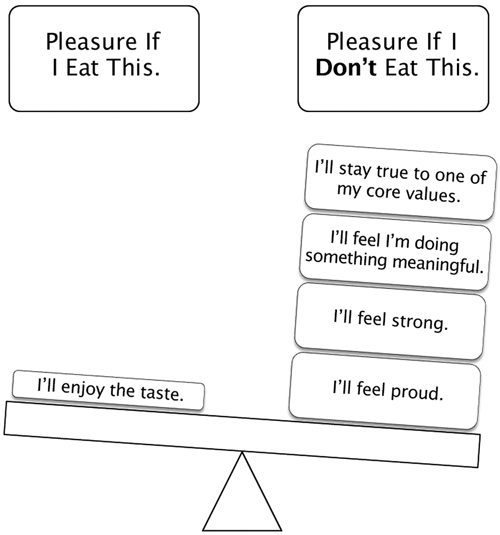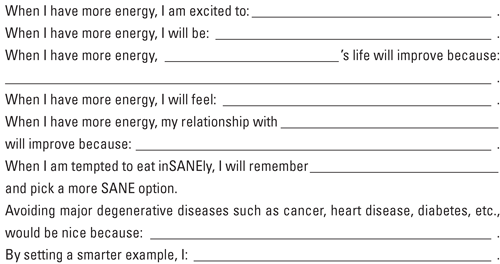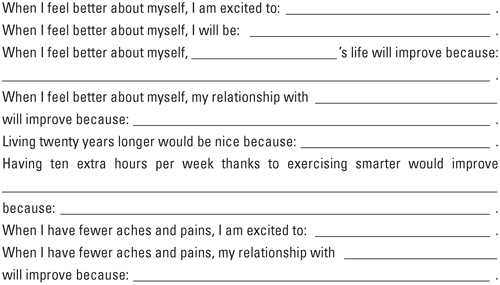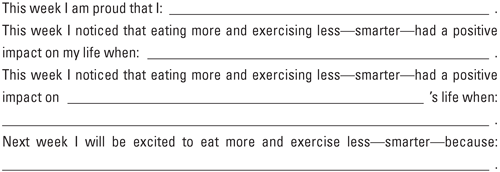

Everything is easier when our subconscious is on our side. A 24/7/365 internal monologue affirming that we will reach and maintain our wellness goals is critical to success. As the saying goes: “Sow a thought and you reap an action; sow an act and you reap a habit; sow a habit and you reap a character; sow a character and you reap a destiny.”
The first step we can take to develop a smarter subconscious is to think in terms of utilitarianism. Utilitarians are focused on pleasure and pain. They believe something is good to the extent it provides the most pleasure and avoids the most pain for the most people. They also make a distinction between the various types of pleasure. Compare the pleasure of watching a loved one accomplish a long-sought-after goal versus the pleasure of taking a nap. Utilitarianism and common sense tell us some pleasures bring deeper and longer-term joy than others. While pleasures of the senses—tastes, touches, smells, sounds, and sights—are nice, they are not as good as pleasures of the mind or spirit: spending time with friends and family, solving a complex problem, reaching a goal, and similar soul-nourishing endeavors.
This framework is a helpful starting point to shift our subconscious as it shows how SANEity provides us with the most pleasure and avoids the most pain. Consider these two versions of Sally.
SANE Sally eats more and exercises less—but smarter—while treating herself to sweets and starches once a week. Sally feels and looks great. This gives her a deep and long-term sense of satisfaction and accomplishment. This radiates in every aspect of her life. Her demeanor, energy level, mental sharpness, and body confidence not only make her feel great but also are obvious and impressive to those around her.
InSANE Sally eats mostly starches and sweets and is inactive. While eating this way does bring her some brief pleasure, she feels terrible for most of the day and she doesn’t feel good about herself. She is borderline depressed, constantly feels sick, suffers from mysterious aches and pains, has little energy, can’t think clearly, and isn’t as pleasant with her family, friends, and coworkers as she could be. This causes her, and those around her, significant distress.
From the utilitarian standpoint, being SANE and smart is the most pleasurable option available to us. We trade shallow short-term pleasure that causes deep long-term pain for more meaningful long-term pleasure.
Next, we can leverage the technique popularized by Dr. Nathaniel Branden known as sentence completion. All we do is write an incomplete sentence and then add a series of different endings. In his book The Six Pillars of Self-Esteem, Branden writes, “Sentence-completion work is a deceptively simple yet uniquely powerful tool for raising self-understanding, self-esteem, and personal effectiveness. It rests on the premise that all of us have more knowledge than we normally are aware of—more wisdom than we use, more potential than typically shows up in our behavior. Sentence completion is a tool for accessing and activating these ‘hidden resources.’ ”178
For example, consider the following incomplete sentences:

Here are the same sentences, each completed a few times.
When I slim down and tone up, I am excited to buy sassy new clothes.
When I slim down and tone up, I am excited to see the expression on my friends’ faces.
When I slim down and tone up, I will feel more confident.
When I slim down and tone up, I will feel proud of myself.
When I have more energy, my relationship with my partner will improve because I won’t be crabby when I get home from work.
When I have more energy, my relationship with my friends will improve because I’ll be able to spend more time with them, since I’ll get my work done quicker.
When I have more energy, my kids’ lives will improve because I’ll be able to play with them outside.
When I have more energy, my life will improve because I’ll perform better at my job and get that raise I deserve.
Consistently completing sentences like this is powerful because it changes what our subconscious perceives as pleasurable and painful.
Seem like a stretch? Have you ever noticed how it’s not only easy but enjoyable for vegans to avoid all animal products? Most people would find forgoing all animal products terribly painful, but most vegans find it pleasurable. How do they do this?
When someone sets a steak in front of them, their mind quickly makes a pro/con list that is heavily stacked in favor of sticking to their principles. See the illustration below.
Vegans effortlessly skip the succulent steak because doing so is the most pleasurable option.
What if we could make our minds work in the same, effortless way, but for inSANE food instead? What if we got more pleasure from avoiding inSANE food than we got from eating it? Then it would feel much better to savor a SANE peanut butter mousse dessert (see Recipes, in chapter 25) than eat a box of doughnuts. So how can we get our minds to work this way?
Sentence completion is one useful tool. It helps us develop a subconscious packed full of reasons that “meaningful long-term pleasure comes from SANE foods” while “meaningful long-term pain comes from inSANE starches and sweets.” As the weeks of SANE eating and smarter exercise roll by and your body, mood, health, and energy levels dramatically improve, your results will speak for themselves, and will serve as positive reinforcement, making it easy to stay on track.

Smarter Sentence Completion, Part 1
Think of sentence completion as a simple do-it-yourself version of the visualization exercises elite athletes are coached through. By deliberately rehearsing something in our mind, we can restructure our brain without having to physically accomplish the action. This neurological restructuring not only gives us the confidence and motivation to reach our goals but also helps us to develop sustainable habits much more quickly. Long term, I recommend sprinkling in a few minutes of sentence completion once per week. To get started, spend no more than fifteen minutes completing the following sentences ten times each. The only requirements are that you spend a maximum of fifteen seconds on each sentence, avoid censoring yourself, and complete the exercise in one undisturbed sitting at the very start or end of your day. Think of it as a written meditation. Let your thoughts flow freely. Enjoy the exercise.

Short term, work through the sentence-completion exercises in the next two sections in half-hour chunks. I think that you’ll find these exercises to be a powerful tool for creating a lifestyle that is happier and healthier.
Smarter Sentence Completion, Part 2
If you just finished some sentence-completion exercises, skip ahead to the next chapter. Do the sentence-completion exercises in this section and the next section over the next two days. It’s best if you don’t spend more than a half hour per day on sentence completion. Remember to complete each of the following sentences ten times quickly. We want to rely on our subconscious, not our conscious mind. Spend a maximum of fifteen seconds on each sentence.

Smarter Sentence Completion, Part 3

Ongoing Smarter Sentence Completion
At the end of each of your five weeks to SANEity (see the next chapter), set aside twenty minutes to do a fresh batch of these sentence-completion exercises.
